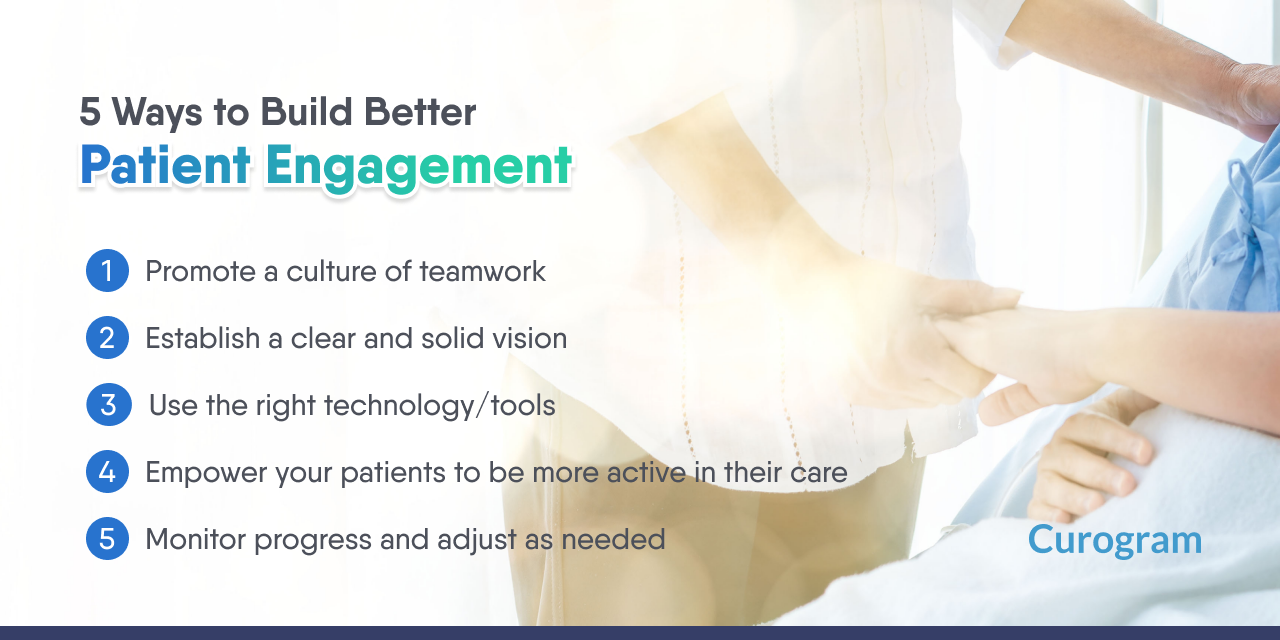5 Ways to Increase Your Medical Practice Revenue
Everyone wants to make more money, and medical practitioners are not exempted. Increasing your medical practice revenue is directly related to an...
4 min read
 Joshua Inciso
:
5/27/22 8:45 AM
Joshua Inciso
:
5/27/22 8:45 AM

Patient engagement has increasingly become more critical in every healthcare organization, from hospitals to small medical practices. So, how will patient engagement matter more in the future, and why is it vital to your practice’s success? Patient engagement can lead to better outcomes and increased patient participation in medical decision-making.
Patients become active members of the care team through patient engagement strategies. Suppose you want your patients to be more invested in their health. In that case, the way to do that is to inform them about their health information, give them better treatment options, and allow them to make proactive healthcare decisions. This builds accountability and promotes loyalty.
This article spotlights the true meaning of patient engagement and why every practice needs it to stay relevant.
Patient engagement is the collaboration between healthcare providers and patients in the care plan decision-making process. Engagement with patients empowers medical practitioners to build trust and stronger relationships, ultimately improving health outcomes. It refers to an ideal situation in which patients are well-informed about possible treatments, recovery, medication options, and other relevant things to their medical care and contributes to improved health outcomes.
It takes proactive patients and supportive, open-minded physicians to create beneficial patient engagement solutions. Medical practitioners must implement patient engagement software to scale those solutions that streamline patient-provider communication and workflows.
Patient engagement software drives better outcomes and customized care. Accountability also increases when patients engage in care decisions.
It’s proven that more and more patients prefer remote care, especially during the COVID-19 pandemic. A study from Accenture shows that 60% of patients are interested in using digital communication software and continue to access care via telehealth. Patients can reach out to their providers faster by using patient communication tools. With text messaging solutions, providers can make more time for their patients and quickly provide answers to their concerns in real-time without letting the patients travel down to the health center.
Healthcare providers must prioritize patient engagement more to help their practice further. Here are five ways that patient engagement can help healthcare organizations and other medical practices.
Patient engagement doesn’t only help healthcare organizations and other medical practices, but patients can also benefit from quality patient engagement. When the patient’s knowledge and understanding of their health become clearer, it encourages them to be more actively engaged in their well-being.
Patient engagement is not a minor area for medical practices. It is essential to facilitate the growth of your organization. When you introduce patient engagement strategies in your practice, it is necessary to understand these five key elements:
Implementing these five strategies to achieve exceptional patient engagement successfully takes discipline and dedication within your practice or organization. Once you find your pace, you can perfect quality patient engagement and have a seamless workflow.
A provider-centric strategy used to be the traditional approach of healthcare organizations. But it fails to acknowledge the critical role patients play in their well-being. Today’s future-forward healthcare organizations primarily focus on shifting to a value-based approach, and patient engagement is crucial in this new model. A recent report from Global Health Care Outlook by Deloitte states that medical practices and healthcare organizations worldwide seek cost-effective and innovative ways to deliver patient-centric, technology-enabled smart health care, both inside and outside hospital premises.
Allowing your patients to take control and make them accountable for their health leads them to better health outcomes. Additionally, patient engagement is an essential element for the long-term success of medical practices and healthcare organizations.
If you want to have successful patient engagement, you need a solid strategy to work with your organization’s vision. By integrating a HIPAA-compliant medical software like Curogram, you can help your practice build better patient management solutions, allowing your practice to enhance patient communication and improve the patient experience.


Everyone wants to make more money, and medical practitioners are not exempted. Increasing your medical practice revenue is directly related to an...

Patients who are engaged are often more active in their healthcare, which can lead to better health outcomes and overall satisfaction levels. And as...

In 2020, healthcare systems transformed drastically to respond to the COVID-19 pandemic. Out of necessity, hospitals, medical practices, and other...